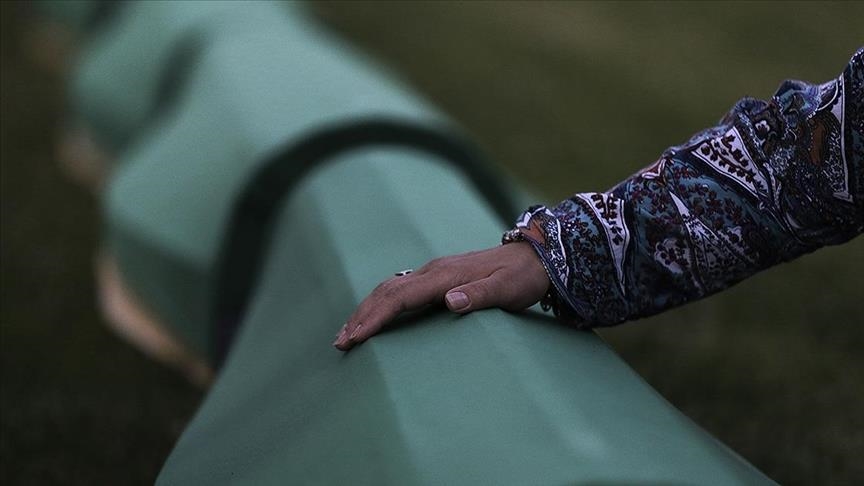After nearly 30 years, daughter to bury mother killed in Srebrenica genocide
Fata Bektic, the only woman to be buried in Potocari memorial cemetery this year, was killed by shellfire while fleeing toward a UN base in 1995

OLOVO, Bosnia and Herzegovina
For nearly 30 years, Behija Rotic carried the pain of not knowing the whereabouts of the remains of her mother, Fata Bektic, who was killed by shellfire while seeking refuge during the 1995 Srebrenica genocide in Bosnia and Herzegovina.
On July 11, however, she will finally lay her to rest.
Bektic, who was 67 at the time of her death, will be the only woman buried this year at the collective funeral at the Srebrenica-Potocari Memorial Center, joining thousands of victims of Europe’s worst atrocity since World War II.
Her remains were found in a shallow grave during an exhumation in 2021 -- 26 years after she was killed -- and were identified through DNA testing earlier this year.
Behija, now 58, is the sole survivor of the five-member Bektic family, having lost her father and two sisters in the years following the genocide.
Journey to find closure
Bektic was killed when a shell exploded near her as she and her family fled toward the UN base in Potocari in July 1995, like thousands of other Bosniaks who hoped to find protection under the UN’s watch. Due to illness, she was on horseback when the shell struck.
“During the entire war, we stayed in our village. But when Srebrenica fell, we left for Potocari like everyone else. She couldn’t walk, but we couldn’t leave her behind,” Behija recalled, her voice trembling as she remembered the moment of the explosion that killed her mother instantly.
Her husband, Remzo Rotic, shared how Behija’s father, Meho, was forced by Serbian forces to bury his wife in a shallow grave near Potocari.
“They told him to be grateful they even allowed a burial,” he said, adding that Meho, a devout man, was later robbed by soldiers but believed his faith and a hidden stash of money saved his life and that of his daughters.
Years later, the family returned to the spot where Fata was buried, marking it with a white stone as Meho had described, only to find the grave empty during subsequent visits. The family provided DNA samples, leading to the eventual identification of Fata’s remains in January.
Behija recognized her mother’s shoes during the identification process, a detail that shattered years of uncertainty and brought a painful form of closure.
Solemn burial among thousands
On July 11, the remains of seven genocide victims will be laid to rest at the Potocari cemetery, including two 19-year-old boys, Senajid Avdic and Hariz Mujic, who will be buried nearly 30 years after their deaths.
Since the end of the war, 6,765 genocide victims have been buried at the memorial center, while 250 others have been laid to rest in local cemeteries at the request of their families. More than 1,000 victims of the genocide remain missing.
Victims were discovered in 77 mass graves and over 150 locations, with the youngest being a newborn baby, Fatima Muhic, and the oldest a woman born in 1901.
The Srebrenica genocide remains the worst atrocity in Europe since World War II, with courts in The Hague, Bosnia, Serbia and Croatia convicting 54 individuals for genocide and crimes against humanity, resulting in over 780 years of prison sentences and five life terms.
For Behija, the burial of her mother will not erase the pain of loss or the memory of violence, but it will provide the dignity of a grave and a place to grieve nearly 30 years after Srebrenica fell.
Anadolu Agency website contains only a portion of the news stories offered to subscribers in the AA News Broadcasting System (HAS), and in summarized form. Please contact us for subscription options.

